IN FOCUS: A story of how a team poured their heart and soul into enhancing Singapore's water supply and what's next for NEWater
Twenty years ago, NEWater marked its public debut at the National Day Parade - a feat that would not have been possible if not for a team of engineers and technicians who gave their all. CNA tells their story.
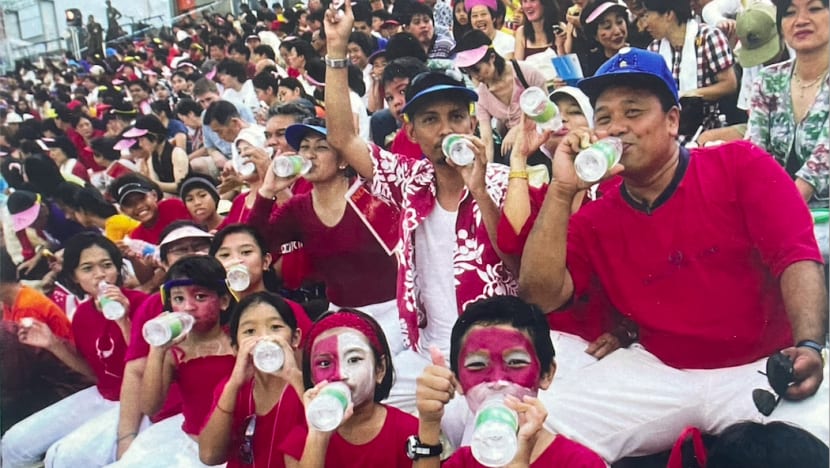
This photo of the audience taking a swig from their bottles of NEWater at Singapore's National Day Parade on Aug 9, 2002 is on display at the NEWater Visitor Centre.
SINGAPORE: As familiar tunes of patriotic songs played across the National Stadium on the afternoon of Aug 9, 2002, tens of thousands of people dressed in red and white rose from their seats to toast the country.
Each was carrying a bottle of NEWater.
Cheering to Singapore's success and its future, more than 60,000 people raised their bottles before taking a swig of the water, which is recycled from used supplies after going through a comprehensive cleaning process.
At home, thousands of viewers took in the scenes as they watched the parade on their television sets.
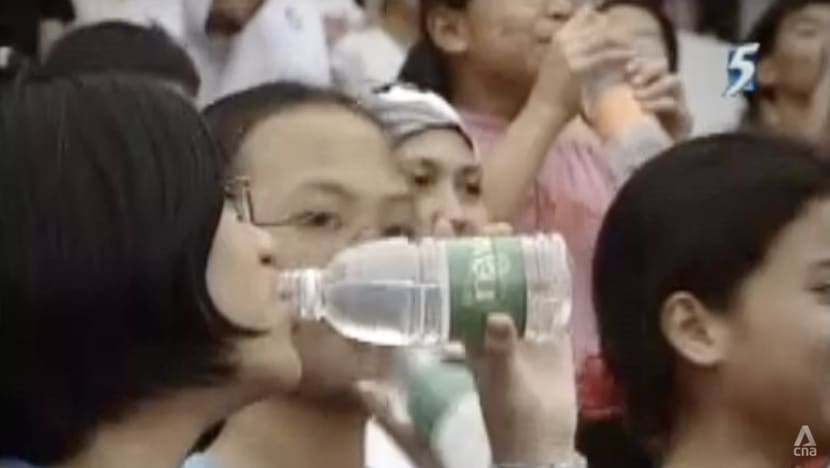
It was a powerful image and one that would be forever etched in the minds of those who worked tirelessly for years to realise Singapore's ambition of having a sustainable source of water.
But despite the inspiring scenes, the only thing Mr Harry Seah could think about at that moment was how terribly wrong things could go.
"We could not even afford a single mistake because it was all about perception and it was on the national stage," said Mr Seah, who led the NEWater project.
Everything he and the team had worked so hard for over the past four years hinged on how the public would respond in the coming days.
Their acceptance was crucial in order for NEWater to be a viable water source.
"There could be people selling food or drinks or some might even bring their food, but all it would take to ruin the perception of NEWater is for 10 people to have food poisoning even if it had nothing to do with the water."
In the lead-up to the National Day Parade, painstaking efforts were taken to make sure that everything would go smoothly.
During production, everyone at the plant was on heightened alert to ensure that there were no abnormalities and that the water quality was up to standard.
Even the bottles that were used to contain the water were of higher quality to ensure perfection.
"We used food-grade plastics for the water because some bottles use plasticisers to make it softer, but we did not want to risk even a very low trace of plasticiser in the NEWater because when you do rigorous testing, it will be detected," he said. "That was the extent we went to in order to ensure quality."
Other agencies also stepped up to help mitigate potential risks including keeping a close eye on food preparation and packaging.
Meanwhile, the Ministry of Defence secured the bottles of NEWater, making sure they were stored properly before distribution.
"Every step of the way, we kept our eyes on the water, because our biggest fear was carelessness, and a lot of things could go wrong, so it was a very stressful time," recalled the 62-year-old, who is now PUB's deputy chief executive in charge of operations.
Their efforts eventually paid off as the event went off without any major issues, much to the relief of Mr Seah and his team.
"Looking back, it was really the most beautiful part of the whole thing, when the whole stadium saluted the country with NEWater," said Mr Seah.
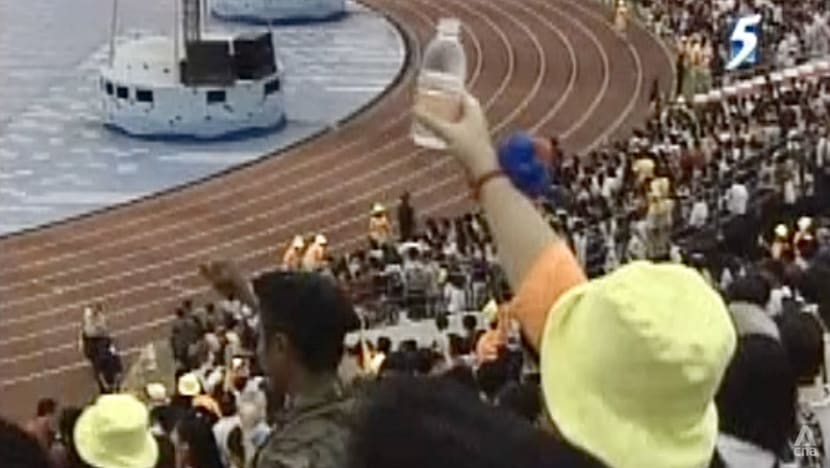
Since then, NEWater has become synonymous with the National Day Parade, with thousands of bottles given out to the audience every year.
Today, NEWater is also an integral part of Singapore's water sustainability plan, and a successful case study for integrated water management internationally.
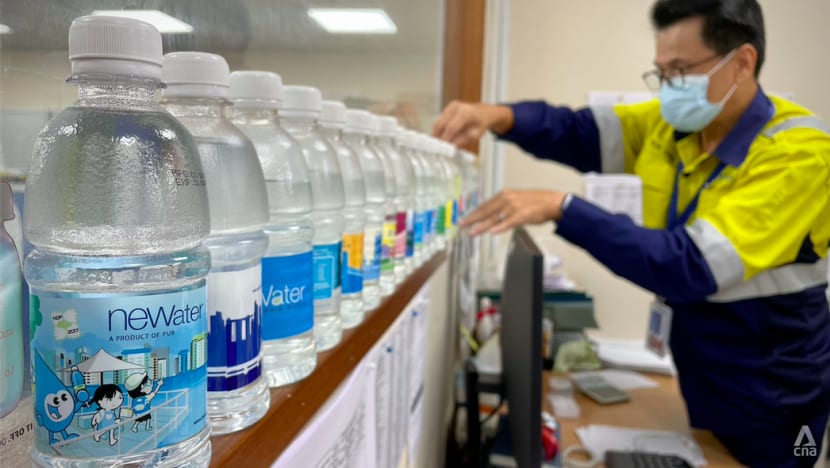
But more than 20 years ago, the idea of turning the country's used water into clean, drinking water seemed like a far-fetched dream.
It took blood, sweat and tears for it to become a reality.
THE MYSTERIOUS PROJECT
In 1999, a young technician by the name of Peck Cher Hin joined a team of five technicians and engineers from PUB and the then-Ministry of Environment to build an industrial plant.
But the entire project seemed to be shrouded in mystery, with no one in the team knowing what they were actually building. Despite asking around for months, Mr Peck found that he could never get a clear answer on what the project was about.
As the plant began to take shape, his curiosity only grew.
"When the equipment started coming in, we saw things like pumps - which wasn't at all unusual for a plant - but then we started seeing filtration vessels and columns, and I wondered what this was all about," he said.
The final piece of the puzzle was found when he saw the plans for how the pipes were to be connected.
Suddenly, he was filled with doubts about the project.
His team had been tasked to build a demonstration plant that could recycle treated used water into ultra-clean, high-grade reclaimed supplies that were safe for drinking.
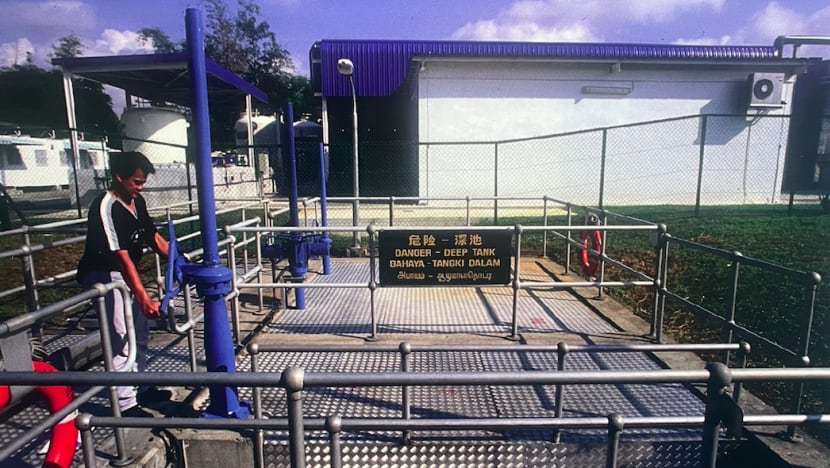
"Up until that point, I had never heard of effluent-treated water being able to come out of a tap and be ready for drinking," said Mr Peck.
"I was full of doubts about this and even among the team, we were questioning whether it was even possible to make this happen," he added, with a laugh.
Unbeknownst to him, there had already been at least two prior studies commissioned by the Singapore Government to study reclaimed water technologies.
The first dated back to the 1970s, which sought to determine the feasibility of producing reclaimed water.
Although the study found it was technically possible, the high cost and unproven reliability of the technology then were insurmountable concerns.
But by the 1990s, the cost and performance of membrane technology had improved considerably. Countries such as the US had also been increasingly using it for water treatment and reclamation.
This led PUB and the then-Ministry of Environment to initiate a study in 1998 to determine if reclaimed water could be a viable option to supplement Singapore's water supply.
As part of this, two engineers from PUB - one of whom was Mr Harry Seah - were sent on a two-week trip to the US to study the full range of water recycling methods, including the use of membrane technology.
But the importance of the study didn't sink in until much later, said Mr Seah.
"I didn't really see the big picture, I just saw the technology that the US was using and thought it looked quite relevant to Singapore but didn't link it to the context of water supply implications at the time," said the 62-year-old.
"We saw that the technology, through years of testing, had been brought to a stage where we could revisit it again, and so my recommendation was basically to explore it."
The findings were so significant that his technical report was read and processed with action taken in less than a week - highly unusual by public service standards, he said.
This eventually led him to put together a team - the one that Mr Peck was a part of - that would build the country's first full-scale demonstration plant.
A LEAP OF FAITH
Getting the plant up and running was anything but smooth sailing.
While the facilities in the US were mostly pilot plants with a small output, Singapore was looking to pull this off on a much larger scale, by producing 2 million gallons of clean water a day.
"We decided that there was no point in repeating what the US was already doing, so we took a leap of faith because at the time we had no experience in designing or operating or even maintaining the plant," he said.
For the first few months, problems seemed to appear at every turn, leading to worries that the project would fail.
The plant's membranes - or filters - kept on fouling, which is a process that occurs when there's a build-up of particles on its surface. This restricted the flow of liquids through its pores, affecting water quality and the efficiency of the filtration system.
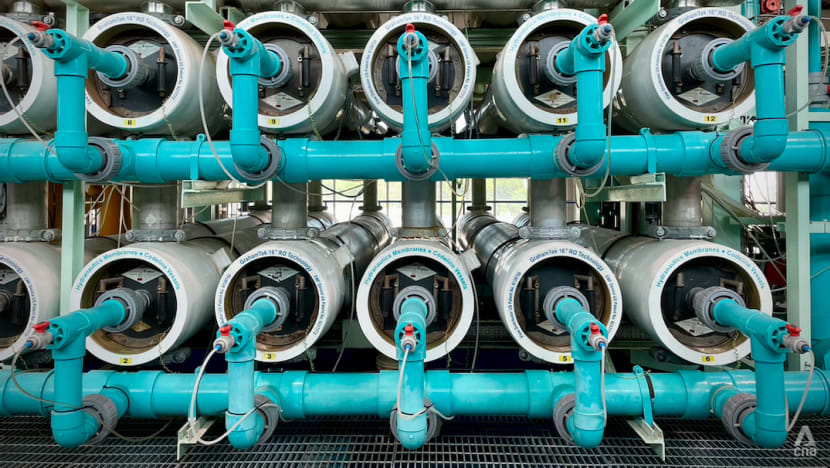
As a result, the plant was unstable, creating issues with costs and reliability.
Recalling the early days of the project, he said his team would often end up working through the night, racing to get the plant up and running.
"In those days, the plant was like my first home, I would only go home for dinner and then run back to the plant," he said.
Problems continued to plague the plant even after it officially opened in May 2000.
"It was three months of hell because it seemed like everything we did was wrong, and everyone was just working day and night, like there was no tomorrow, to fix the problems."
For Mr Peck, whose son had just been born, it also meant having to juggle being a new parent and operating a plant at the same time.
But despite the challenges, the team never gave up and instead, drew strength from one another.
"I didn't have to justify or persuade people that it was an important project, it just came naturally," said Mr Seah.
Noting the amount of personal sacrifices involved, he expressed great appreciation for those who gave it their all.
"They had to sacrifice time with their children, their family, and even their social life, because sometimes they had to work until 2 or 3am. These were all the sacrifices they made," he said.
"They could have easily not done this and treated the project like routine work but they knew that the work they were doing was not routine.
"That was the beauty about this project - everyone including industry consultants and suppliers from the private sector was on the same page."
Then, in August 2000 - three months after the plant opened - the team made a major breakthrough.
"We realised the key issue … The membranes at the plant were only being disinfected intermittently out of fear that regular cleaning might end up damaging them," said Mr Seah.
In the end, all it took to solve the problem was to go back to the basics.
"We did simple lab tests - no different from the ones you do in school - where you do a simple titration to see what is the point where, based on dosage, (the membrane would be damaged)," said Mr Seah.
"We realised that there was no way that we could get to that (point) because our dosing was too low," he said.
"So we assessed that those fears were unwarranted and started regularly disinfecting the membranes."
Their assessment proved to be correct as the plant started to stabilize.
"Water was coming in and going out (in a continuous flow), and when we looked at our screens to see the performance of the plant, it was a very nice straight line," said Mr Seah.
"That was when we knew that we had more or less got it."
FIRST DROP OF SUCCESS
Although tests showed that the reclaimed water was well within global drinking standards and safe, there were still some - including Mr Peck - who were sceptical about whether the technology really worked.
But the moment they saw, tasted and touched the water - all doubts were thrown out of the window.
Recalling that moment, Mr Peck said everyone, including Mr Seah and contractors of the project, had gathered at the plant for the testing.
As the factory hummed, they held their breath in excitement as the water started flowing through the pipes.
"We would move with the water as it passed through different stages, and when we finally came to the last stage, someone opened the tap and said this is the water," said Mr Peck.
What came out was crystal-clear water, much to the delight - and relief - of everyone at the plant.
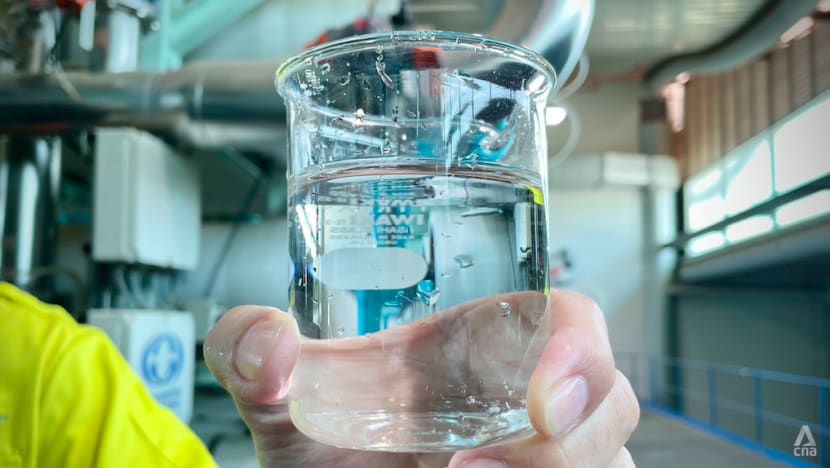
"We were so happy. All of us drank the water and even played with it, splashing the water at each other," he said, chuckling at the memory.
"I actually couldn't tell the difference between the water and tap water - now I can taste a slight difference but if you had asked me at that time, I wouldn't have known if no one told me."
For Mr Seah, that moment would be etched in his memory forever.
"It was very emotional and satisfying because (up until that point) we had been hitting the wall. My people had worked so very hard because everyone saw the importance of the project and that by hook or by crook, we would have to get it working," said Mr Seah, as his eyes welled up with tears.
"When we finally got it, I think we were all relieved because it meant that we had done our job," he said.
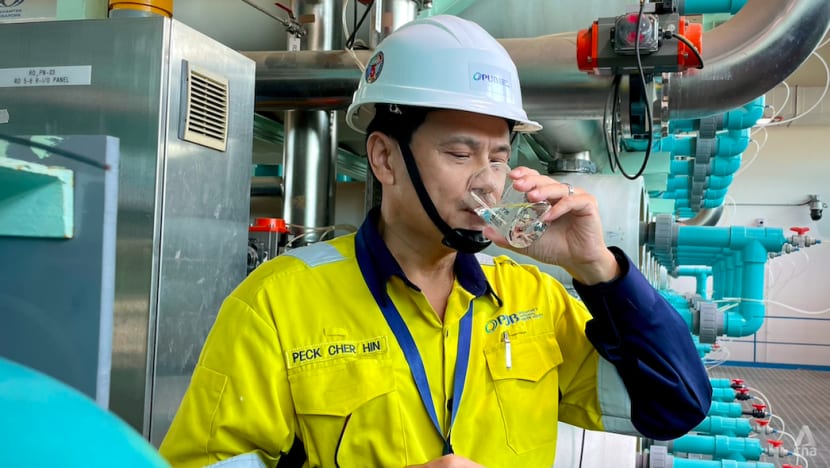
With the water tried and tested, it was time to give it a name but even this had to be carefully considered.
"The word reclaimed or recycled sounded negative at the time, so there were discussions about coming up with something more positive and could inspire hope," said Mr Seah.
"So we thought about what the technology actually offers us by cleaning or purifying the water and someone said it gives the water a new lease of life which is how we came up with 'new water'."
"But new water is two words ... buay swee (Hokkien for doesn't look nice) so we decided to join the two words together using one 'W'. Then came the discussion about whether the 'W' should be in uppercase or lowercase."
"If you put the 'W' in lowercase, it reads as 'NE-water', which means no water," he laughed.
And that was how NEWater was born.
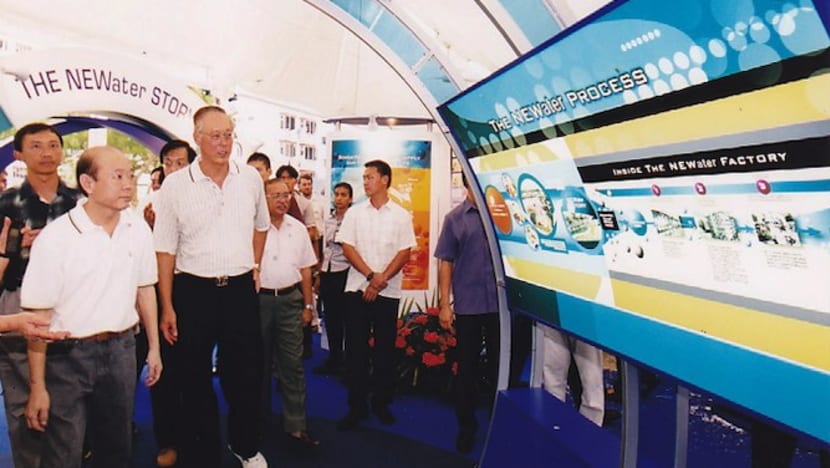
CHALLENGES AHEAD
Today, public acceptance for NEWater remains high. A survey conducted in 2002 found that most people would drink it directly or if it was mixed with reservoir water.
Earlier this year, PUB and Brewerkz announced that a craft beer made with NEWater would go on public sale for the first time.
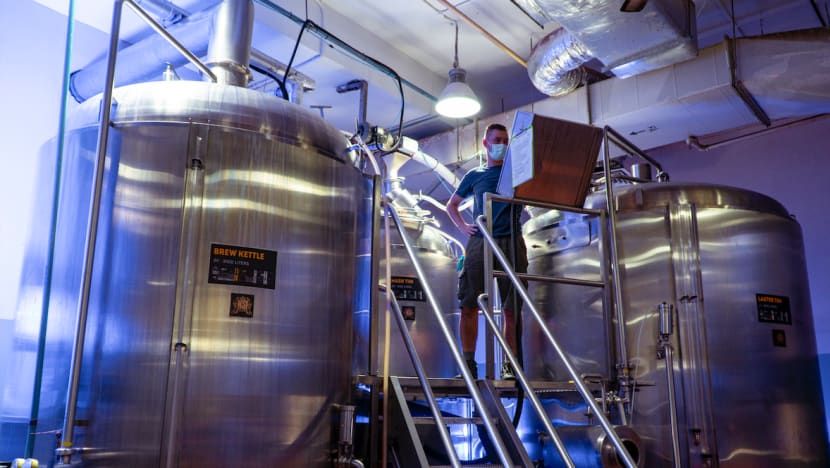


Owner and director of Brewerkz Tan Wee Tuck told CNA the response has been positive so far, with the beer almost sold out in selected supermarkets across Singapore.
"Having been around for so long, NEWater is already more or less accepted here so we weren't too concerned about public acceptance," said Mr Tan.
"But what was surprising was the international reaction because people are not familiar with NEWater, which is recycled water. So for them, there was a shock factor. But (the response) was still quite positive.
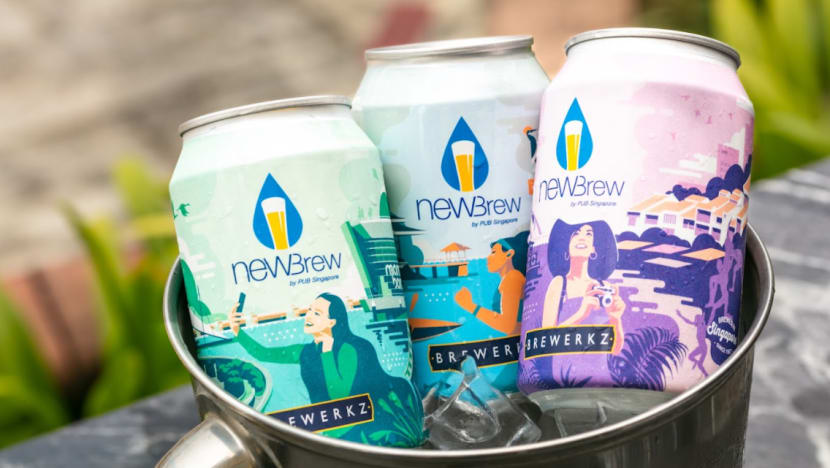
The past two decades have also seen much progress in the country's production of NEWater.
To date, Singapore has five NEWater plants in Bedok, Kranji, Ulu Pandan and Changi with a combined capacity of around 170 million gallons a day.
This can meet up to about 40 per cent of the country's current water demand of 430 million gallons a day.
Water produced by these plants is used mainly for industrial purposes, such as cooling at wafer fabrication plants, industrial estates and commercial buildings.
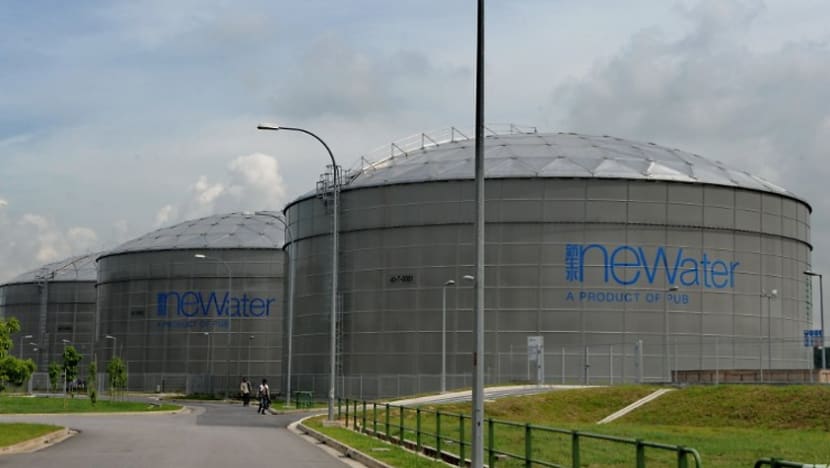
During dry periods, NEWater is added to reservoirs to blend with raw water, before being treated at the waterworks so that it can be supplied to consumers as tap water.
However, in the face of climate change which is expected to exacerbate global water insecurity, water continues to be an existential issue for land-scarce Singapore.
An existing agreement that was signed in 1962, entitling Singapore to draw and use 250 million gallons of raw water a day from the Johor river, will expire in 2061.

To ensure a sustainable water supply, efforts are currently under way to improve the efficiency and capacity of NEWater production.
Two upcoming NEWater plants in Changi and Tuas, which are expected to be ready by 2025 and 2026 respectively, will add 75 million gallons of NEWater per day.
Both will use a more efficient reverse osmosis technology that can recover and recycle up to 90 per cent of used water to produce clean water.
This is higher than the recovery rate at existing plants which hovers between 75 and 80 per cent.
"We have a runway (to improve our processes) so we need to look for new ideas and technologies to drive down the energy requirements because in Singapore, we have limited resources, so we need to think about sustainability," said Mr Seah.
HANDING OVER THE REINS
At the Bedok NEWater factory, where he has worked for the last 18 years, Mr Peck sits across from this journalist in the conference room, a look of contentment on his face.
"I always say that this is my second national service because as a Singaporean, I'm contributing to Singapore," he said.
"To be able to work on this project, makes me feel very proud because every day, I find meaning in my work."
What made the project all the more special was the people he had worked with, he said.
"We worked very closely and were like friends, where we would share knowledge with each other, or teach and learn together," he said.
"It made us, all the people who worked on the demonstration plant, like a very big family and we're still close even till today."
The 52-year-old senior engineer has also started passing down his knowledge to the younger generation of engineers and technicians by conducting training at PUB's Singapore Water Academy
"I hope that whatever we are doing now, the new generation will take over from there and do it even better, and show the world that Singapore can do it," said Mr Peck.
Across town, Mr Seah sits in his office at the Environment Building quietly reflecting on the past 24 years.
"Would I have done anything differently? Probably not much because I think we got it right," he said.
"If we were to turn back the clock and do something a bit more extreme (like making NEWater available for direct potable use), the project might fail, because the public's fear and concerns are real things, (and so) we have to convince them," he said.
"The first three months we had a lot of problems, but it was a time where we learned a lot of things. If it had gone smoothly, I don't think we would have learnt anything.
"So much so that today, the operation and maintenance of NEWater is line work, or routine work.
"My job is to make it boring, because boring means no problem," he said, laughing.
As we continue our chat, a glint of light suddenly catches my attention.
Turning towards the window, I spotted a plastic bottle of water with the words "NEWater Jan 01" scrawled in white ink.
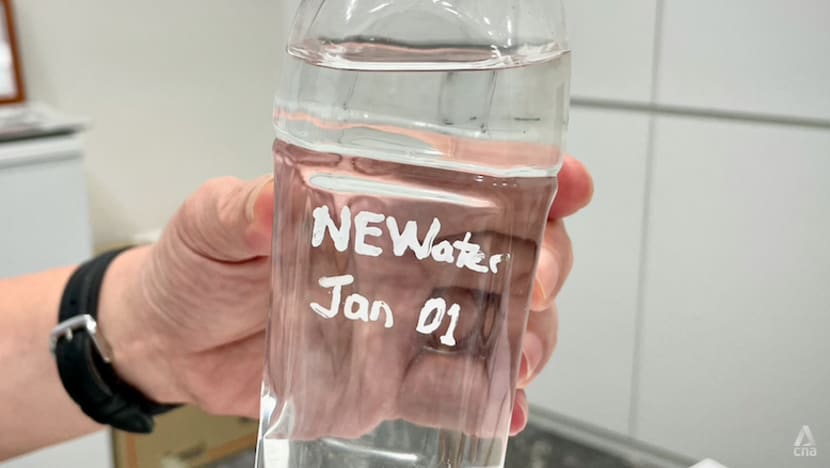
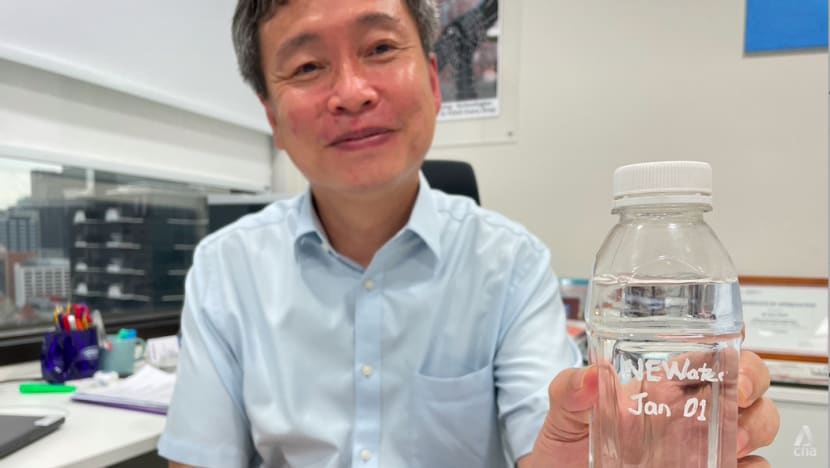
Curious, I inspected the bottle more closely and noticed that it had not been opened yet.
"One of the old-timers who had worked very closely with me on NEWater gave it to me before he retired one to two years ago, because he knew how attached to NEWater I am," explained Mr Seah.
"He had kept the water all these years back from 2001."
"What are you planning to do with it?" I asked.
"I'm keeping it!" he said, with a laugh.
"When I retire, I'll pass it to somebody else."
Editor's note: An earlier version of this article said the existing Singapore-Johor water agreement was signed in 1961. It should be 1962.
















